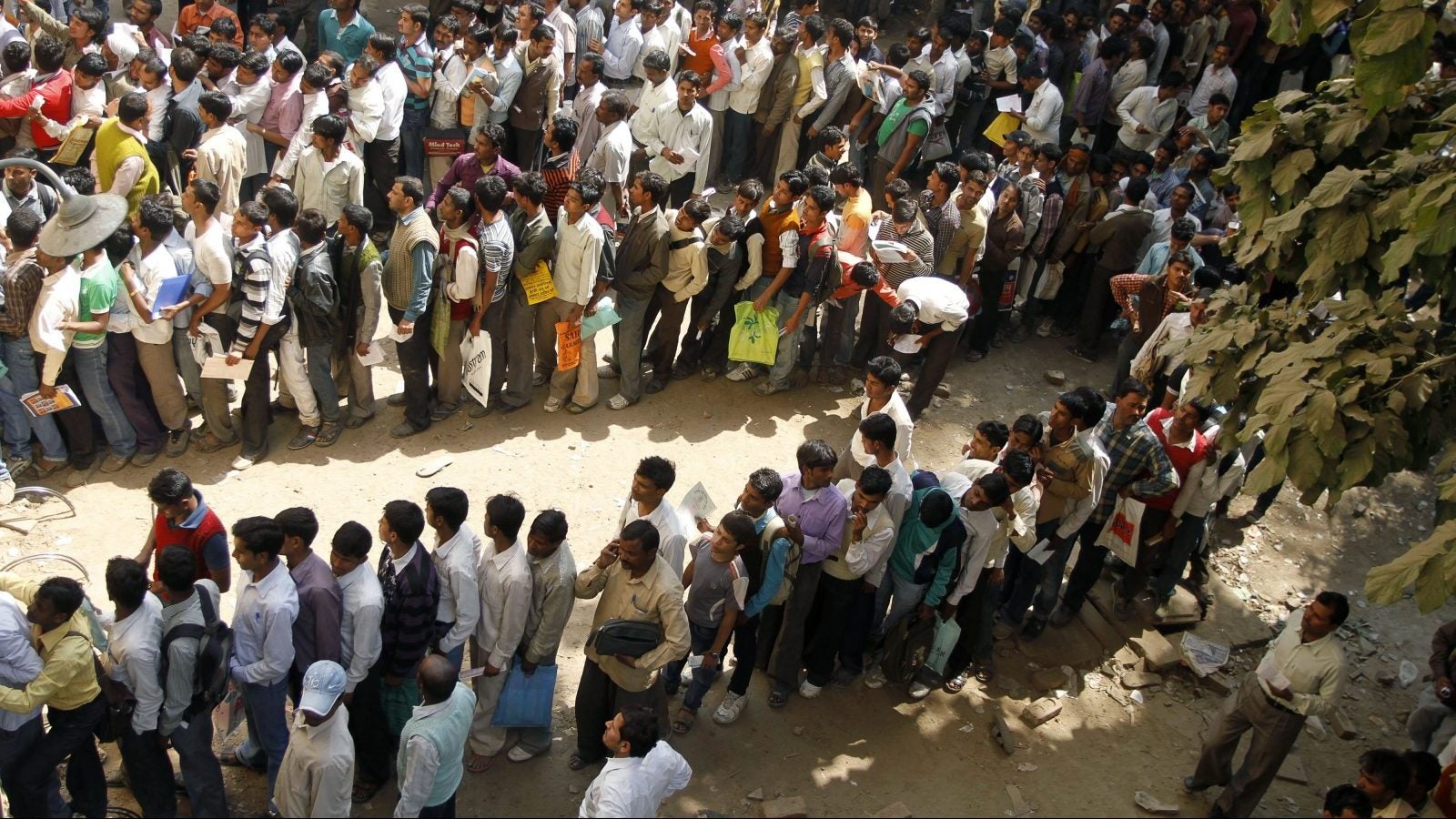Around 31 million Indians are unemployed, and it will only get worse
The number of jobseekers in India, rising steadily over the last few months, spiked to 7.1% in the week ended Feb. 25.


The number of jobseekers in India, rising steadily over the last few months, spiked to 7.1% in the week ended Feb. 25.
There are around 31 million unemployed Indians seeking jobs now—the highest since October 2016, according to a report published on Feb. 27 by the Centre for Monitoring Indian Economy (CMIE), a think-tank that tracks business and economic data.
After falling to a low of 3.4% in July 2017, unemployment rates have been rising gradually, the CMIE data show.
“Given that the recent three weeks have consistently shown unemployment rates at close to 7%, it is possible to infer now that the rate is back to the levels just before demonetisation,” Mahesh Vyas, CEO of CMIE, said in the report. While the absolute unemployment number isn’t alarming, the steady rise is, he added.
Unemployment rates fell for a few months after the note ban in November 2016, as jobseekers sat out of the workforce and focused on acquiring new skills instead of waiting to find jobs in a tough economy.
During that period, the labour participation rate (the total number of people employed or actively hunting for jobs) hovered between 46% and 48% before demonetisation. By July 2017, it fell to below 43%. Now the CMIE expects it to go past 44% by the end of February 2018.
“The labour force has still not recovered entirely, and remonetisation by the Reserve Bank of India (RBI) was not enough to bring labour participation to its earlier levels,” Vyas said.
While people are returning to the workforce, there aren’t enough jobs around.
“The coming months are not the best for employment,” Vyas said. Activity in rural India will slow down after the rabi crop is harvested and won’t pick up until the kharif season begins in May, he added.
In addition to the 31 million unemployed as of Feb. 25, urban India will see a spike in demand for jobs as a fresh batch of college graduates enters the workforce in May. But the number of jobs created in financial year 2018 is an estimated 600,000.